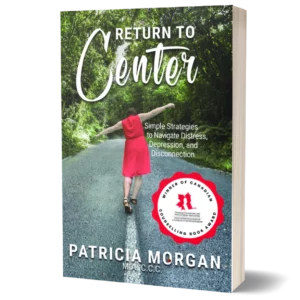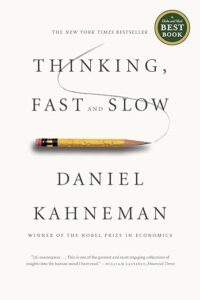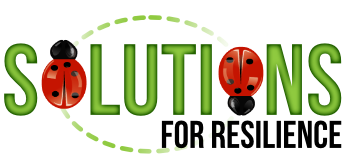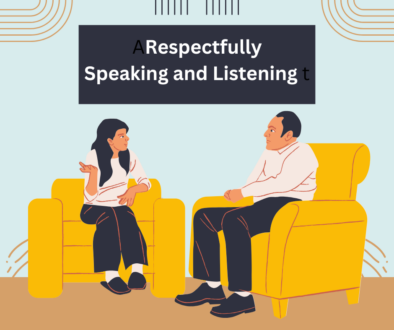How to Communicate in High-Stress Situations

It was several years ago that our son, Benjamin Morgan, principal of the Canadian based Centre for Crisis and Risk Communication introduced me to Dr. Vincent Covello. I soon developed a deep curiosity about his informed perspectives and his work in high-stress situations. Here is a summary of his biography:
Dr. Vincent Covello is a global expert in risk, crisis, and high-concern communication, serving as Director of the Center for Risk Communication. He has published over 150 articles and 20 books,
advising governments, organizations, and agencies worldwide, including the CDC, Department of Defense, Environmental Protective Agency, and World Health Organization WHO. Dr. Covello played a key role as a senior adviser to the WHO’s emergency committee on Ebola in 2014, coordinating international responses and fostering trust among diverse stakeholders. His work emphasizes the importance of cultural understanding and trust in effective communication. He spends approximately 300 days annually traveling to provide consultation, training, and keynote speeches on crisis management and communication strategies.

Then in 2023 Dr. Covello graciously read and wrote an introduction to my book, Return to Center: Simple Strategies to Navigate Distress, Depression, and Disconnection. In 2024, Return to Center was chosen for the Canadian Counselling Book award.
Recently, I attended Benjamin crisis and risk conference, Crisis Compass, where Covello presented. Here are highlights of my thoughts and take-aways from the experience.
High-Stress Situations are More Than Big Crisises
While listening to advice on how to handle high-stress situations, I thought about out-of control workplace conflict, domestic violence, and out-of-control youth.
I also recalled the distress I have witnessed in my therapy clients, friends and family. There is often a shocked after effect of the death of a loved one, invasion of thieves into a home, a car accident, discovery of a partner’s infidelity, or hearing a life-threatening diagnosis. As Dr. Vincent Covello describes:
In high-stress situations, the brain’s perception shifts, making it harder to absorb information, especially when something valuable is at risk, like health or economic security. The core purpose of risk, crisis, and high-stress communication is to navigate these altered perceptions and ensure clear understanding.”
Tips to Manage High-Stress Situations
Here are some helpful ideas you might use the next time you are in a high-stress situation.
- Use The Rule of Three:
The human brain can only process up to three messages at a time, especially under stress. This makes it essential to simplify communication. Use Vincent Covello’s 27-9-3 Formula. It helps give clarity and retention to what you communicate.
- No more than 27 words,
- In nine seconds.
- For three key messages.
2. Build Trust:
- Be First to address the issue: Promptly addressing the distress helps bring calm.
- Show Empathy and Compassion: People want to feel understood and cared for before they listen to what you know.
3. Communicate with Clarity:
- TTT Model: Use the “Tell me, Tell me more, Tell me again” model to reinforce key messages of comfort and assurance.
- Avoid complex language, as stressed individuals often process information below their usual educational level.
- Use language that is respectful and inclusive. Avoid phrases like “as you know,” “obviously,” and “clearly,” which may sound condescending or dismissive.
- Be mindful of words such as “disruption” in tragic contexts; use “tragedy” to show compassion and respect.
4. Understand Distress Nuances:
- Pay Attention to Nonverbal Cues: People pay more attention to body language and tone than to words, often interpreting these signals in the worst possible way. To give signals of emotional safety use open body posture.
- Primacy and Recency Effects: People best remember the first and last words they hear.
- Negative Bias: People are naturally more focused on the negative; therefore, a positive message may need to be reinforced three times more than a negative one.
- Worst-Case Assumptions: In stressful situations, people are likely to assume the worst, especially when words like “never” or “always” are used. So avoid them!
5. Engage and Involve:
- As the ancient Chinese scholar noted: “Tell me and I forget; involve me and I remember.” When people are involved, they remember 75-84% more effectively. Involve people when they’re calm enough to the decision-making process.
6. Communication Goals:
- Trust Requires Transparency: Honesty and openness are essential to building trust. In high-stress situations, 15-20% of trust comes from demonstrated expertise, while 15-20% comes from honesty. But the majority—50%—is influenced by showing care, empathy, and compassion.
- Inform for Decision-Making: Empower people with truthful, well-delivered information so they can make informed decisions.
7. Handling Questions:
- Avoid trapping questions that can limit responses to “yes” or “no,” as these can corner individuals. Instead, use open-ended questions, such as “How can I help?” or “How can we address your concern?”
Here is a brief video clip of Dr. Vincent Cavello sharing fascinating facts about reactions during high-stress situations:
Thinking, Fast and Slow
 During his talk, Covello referred to the book, Thinking, Fast and Slow, by Nobel laureate, Daniel Kahneman. It explores how the mind works by fast and slow thinking and how these two thought patterns affect our human judgment and decision-making. After doing some research I discovered these points.
During his talk, Covello referred to the book, Thinking, Fast and Slow, by Nobel laureate, Daniel Kahneman. It explores how the mind works by fast and slow thinking and how these two thought patterns affect our human judgment and decision-making. After doing some research I discovered these points.
Fast Thinking is our automatic, quick, and intuitive system. It operates with little effort and relies on instincts or mental shortcuts. Fast thinking is always active, working under the surface to make judgments and interpret information. For example, when you quickly decide a person is friendly based on their smile, you’re using fast thinking. Using fast thinking in high-stress situations is often unhelpful.
Slow Thinking uses a more deliberate, logical, and conscious system. It requires effort and can handle complex tasks, like solving a difficult math problem or making a big decision. Slow thinking is used when a problem requires focus and reasoned judgment, but because it’s more mentally tiring, we tend to avoid using it unless necessary.
Fast thinking can often lead to thought biases, that is errors in judgment. Some key biases include:
- Availability Bias: Relying on easily accessible information, often from recent exposure, rather than objective data. For instance, after hearing about airplane accidents, people may overestimate the risks of flying.
- Anchoring Effect: Initial information influences decision-making. For example, seeing a high price for a product may cause people to expect higher prices for similar items.
- Confirmation Bias: Seeking out or interpreting information that supports your existing beliefs.
Seven More Thought Pattern Considerations from Daniel Kahneman
- Prospect Theory explains how we perceive gains and losses differently. Losses feel more intense than our gains. People tend to avoid risks to make gains but will take bigger risks to avoid losses.
- Overconfidence is when people overestimate their knowledge, abilities, which leads to poor decisions.
- The Planning Fallacy occurs when we underestimate time, cost, or risks, focusing on ideal results while ignoring potential setbacks.
- The Halo Effect is how one positive trait, like attractiveness, can influence unrelated judgments about someone’s personality or intelligence.
- WYSIATI (What You See Is All There Is) refers to our tendency to make judgments based on available information, ignoring what’s missing, which can lead to overconfidence.
- Hindsight Bias occurs when we believe an event was predictable after it happens, even if it wasn’t.
- Experiencing Self vs. Remembering Self describes how we experience events in the moment versus how we recall them, with memories often shaping our overall satisfaction.
As you can see fast thinking mixed with high-stress situations could be more than problematic. When facing distress, take a deep breath and slow your thinking.
Conclusion:
By paying attention to our biases, our posture, and our words we can better build trust, and support informed decision-making, helping people navigate challenging situations with clarity and confidence. Consider joining me in slowing down your thinking and using some of Dr. Vincent Covello’s and Daniel Kahneman’s tips when facing high-stress situations.
Please check out these related posts:
- Return to Center: Simple Strategies to Navigate Distress. .
- Improve Your Relationship Communication by Listening




